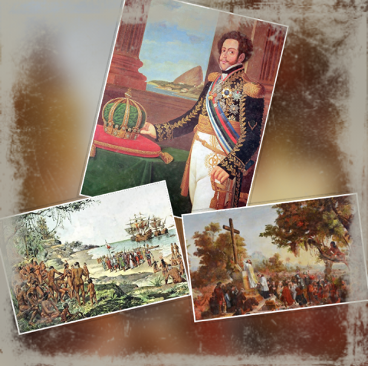
As earlier indicated, there is a need to de-universalize the Latin American colonial experience to some particular form. In this case, we can explore Brazil which was one of many episodes of Portuguese overseas expansion which began in the early 15th century following the arrival of the Portuguese at the coast of Brazil in April 1500. Although gold and spices were in high demand by the Portuguese in the 15th and 16th centuries, there were other goods like fish, meat, dyes, wood, medical herbs, and gradually, African slaves.
During the early 19th century, scholars debated whether the arrival of Portuguese in Brazil was merely a chance caused by ocean currents or whether there was prior knowledge of the New World. Although the evidence suggests that Pedro Alvares Cabral embarked on an expedition towards India, this does not negate the probability that the Portuguese navigators might have visited the coast of Brazil prior to 1500. Upon their arrival, the Portuguese found an Amerindian population (Tupi-Guarani and the Tapuia) living along the coast and basin of the Paraná and Paraguay Rivers.
The word “catastrophe” is claimed to be the most appropriate description of the fate of the Amerindian population because millions of Indians lived in Brazil during the time of conquest, however, only 270,000 are present today. While some Indians resisted through self-isolation by migrating to poorer regions to preserve their biological, social, and cultural heritage, others who were conquered experienced cultural violence, death, and epidemics such as measles and smallpox were a demographic catastrophe.
Portuguese used two methods of subjection: the first was a ruthless economic venture by the colonists who simply enslaved Indians (given that slavery was a dominant form of servitude in Brazil), while the second was attempted by religious orders from the Jesuits who sought to turn Indians into “good Christians” which meant acquiring European work habits thereby creating a pliable indigenous labor force to serve the needs of the colony since neither the colonists nor the priests/fathers had any respect for indigenous culture as Father Manuel da Nóbrega doubted the humanity of Indians.

This is the assimilationist policy earlier referenced in Pillay’s work. In other words, the Portuguese sought to make the Indians adopt the European culture deemed to be superior and civilized compared to Indian culture characterized as inferior or uncivilized. The state and the Catholic Church were the two institutions responsible for organizing colonial Brazil. Whilst the state fundamentally guaranteed Portuguese sovereignty over the colony in terms of administering, developing a settlement policy, and solving issues of labor supply, the church as a mutually reinforcing agent was in charge of people’s behavior or controlling their souls as an effective means of fostering obedience to state power. In other words, the church was present in the quotidian lives of people: birth, marriage, death, living a decent life, baptism, confession among others which ultimately shaped the colonized subject into an obedient/good Christian.
Also, laws were passed that encouraged marriages between Indians and whites but such interracial unions were prohibited when it came to blacks for instance the 1755 decree for black people were considered racially inferior as 19th century scientific theories reinforced this prejudice.
To demonstrate the significance that theory travels, we can examine the end of the 18th century where the most important manifestation of rebellion in Brazil occurred; thus the Inconfidência Mineira of 1789 in Ouro Preto, Minas Gerais. Members of the Inconfidência were influenced by ideas from Europe like “French ideas” and also the liberalism emanating from the American revolution were sources of inspiration since some of its members like José Joaquim da Maia and José Alvares Maciel had both studied at the University of Coimbra in Portugal. The aim of its majority members was to declare Brazil a republic with a constitution modeled upon that of the United States.
Finally, the implication herein is that the local intelligentsia are at liberty to use epistemes irrespective of origin as long as this relates to their contextual conditions or internal struggles as this was the case that Brazil sought independence from the Portuguese conquest which ended on 7th September 1822, albeit with a monarchical government maintained as Dom Pedro, the prince regent was crowned emperor henceforth receiving the grand title of Dom Pedro I.
The writer is a Ph.D. Fellow at the Makerere Institute of Social Research (MISR), Makerere University. These thoughts, originally titled: Genealogy of African Debates on Decoloniality: A Synthesis of Afrikaans and Kiswahili were first shared with the Cultural Studies Institute, Kampala. In the final part of our series, we will briefly examine Hindu nationalism and decolonial perspectives.
To support The Sword, please contact us via Twitter/X (@thesword_08) or send us an email via theswordug@gmail.com.

